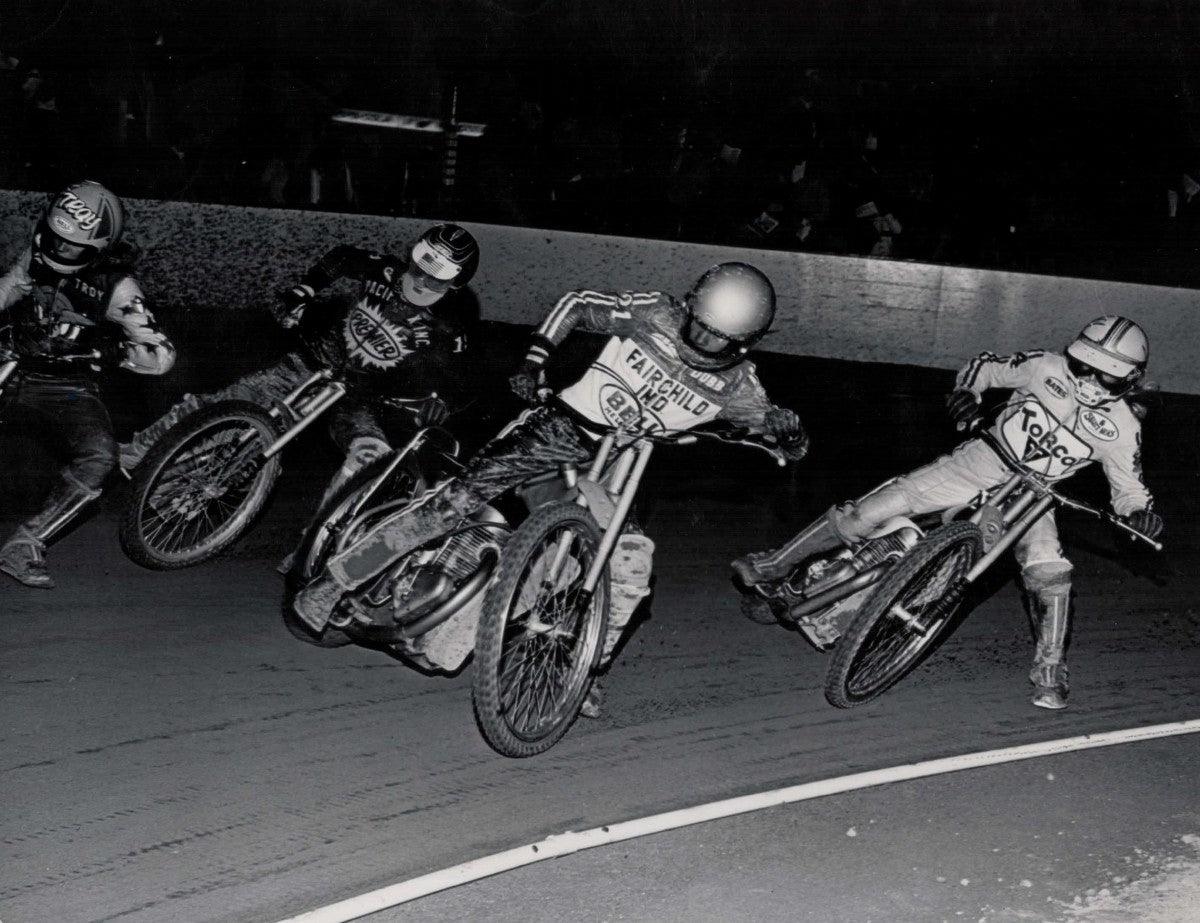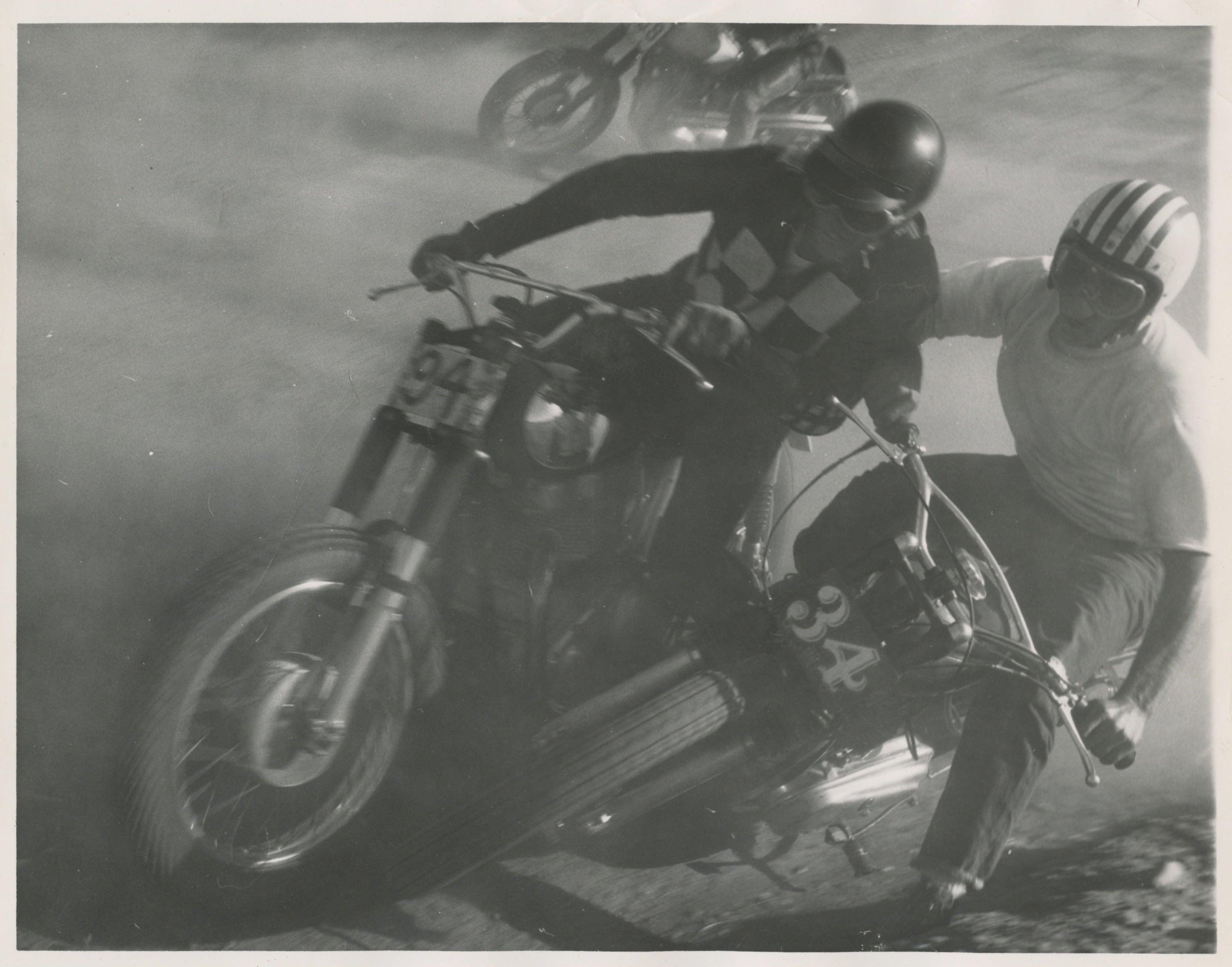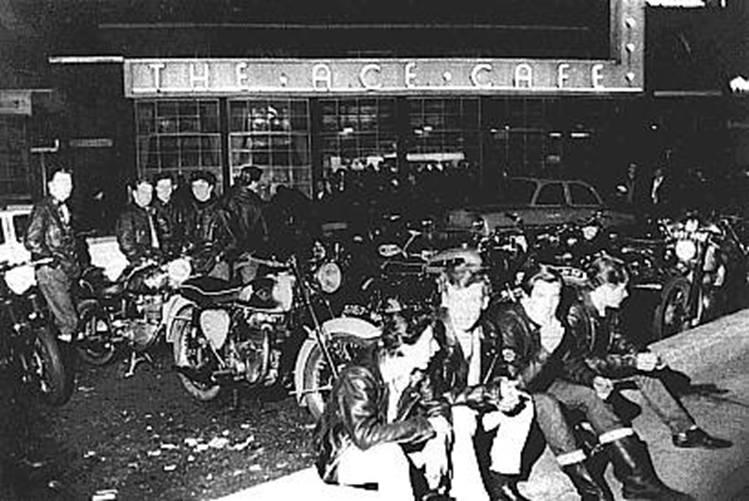
In the words of Slidin’ Sonny Nutter, speedway racing was “Four guys, four laps, for all the marbles.”
It’s widely accepted that all riders probably have a screw loose. Racers, then have at least two screws loose. But speedway racers must have at least three to get out there and give it all they’ve got on the dirt ovals.

A speedway race is, as Sonny Nutter said, four racers competing for four laps on a dirt track from a standing start. The tracks are 260 to 425 meters long, and are always oval-shaped. A speedway event consists of multiple heats of races, and racers score points for whatever place they finish each heat in, and the winner is the racer with the most points at the end of the event. Straightforward enough.
Speedway bikes are a different story. A speedway bike has only one gear, runs on pure methanol, weighs a minimum of 170 pounds, has no electronic components managing the engine, and has no brakes. As required by FIM’s “Track Racing Rules.” For the record, bikes often get up to 80 miles per hour in the corners during these races. The only controls they have are the throttle, clutch, and handlebars.

Speedway racing has been a fan-favorite internationally since the early 1900s, although its origins aren't exactly known. Sometime during the late 1910s and early 1920s people started racing in an early form of speedway racing, and by the late 1920s was an international hit. The first organized races were held in Australia, the United Kingdom, and the United States, and many racers who competed in what was then known as “Short Track Races” gained star status because of how flashy and exciting the races were. The first racer to inspire the term “broadsiding” was an American racer named Don Johns in 1914, who was said to be able to run the entire course with the throttle wide open, throwing huge showers of dirt up into the air as he ripped through each turn.
Many legends of motorcycling competed in speedway racing during their careers. In 1975, Sonny Nutter, the infamous two-time California State Speedway Champion, led the American National Speedway Team at the World Speedway Championship. Speedway racing was so lucrative, and Nutter was so good at it that he was able to raise a family and make a living off of it just competing five nights a week at the local tracks.

Speedway racing is still very popular across the world, both on the amateur and professional levels. Numerous clubs, tracks, and events are held globally that are both accessible to the interested amateur and the seasoned veteran.




Leave a comment
All comments are moderated before being published.
This site is protected by hCaptcha and the hCaptcha Privacy Policy and Terms of Service apply.